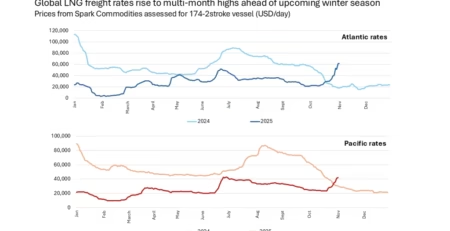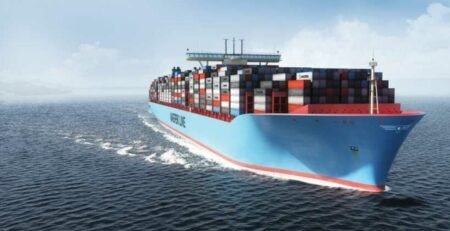US–China Port Fees on Hold: A Fragile Calm at Sea

There’s finally a pause in a dispute that has kept shipping executives awake for weeks.
The United States and China have agreed to suspend their reciprocal port fees for one year, offering a brief moment of calm in a trade relationship that’s rarely still.
The decision was reached during the Trump–Xi meeting in Busan, after days of quiet negotiation between both delegations. Each side agreed to hold off on new port levies that had threatened to add billions of dollars to shipping costs on the trans-Pacific corridor.
A Costly Fight, Now on Ice
It all started in October, when Washington announced new port charges on Chinese-built or operated vessels, citing “competitive distortions” in shipbuilding and maritime services.
Beijing responded almost immediately, matching the move with its own set of fees targeting U.S.-linked ships.
Carriers panicked. Several major lines began to reroute vessels through secondary hubs like Busan and Kaohsiung, avoiding direct calls that could trigger penalties. Freight planners spoke of a “logistics minefield.”
Now, with the one-year suspension, that minefield has temporarily cleared.
“It’s not peace, but it’s something,” said a regional manager for one global carrier. “We can finally plan a schedule without rewriting it three times a week.”
A Welcome Reprieve
The International Chamber of Shipping (ICS) called the pause a “sensible and stabilizing move.”
Market reaction was equally quick. Spot freight rates between Shanghai and Los Angeles eased slightly as carriers unwound contingency plans, and port terminals in Long Beach and Ningbo reported a return to more regular traffic patterns.
But industry analysts remain cautious. The suspension doesn’t erase the underlying tension over maritime dominance and technology control. Both governments framed the move as a “temporary goodwill gesture.” No one expects it to last beyond the agreed 12 months unless broader trade talks make progress.
What It Means for the Industry
For now, carriers and forwarders can expect:
-
More predictable schedules, especially for trans-Pacific services;
-
Lower bunker costs, as detours around restricted ports are no longer needed;
-
And reduced surcharge volatility, at least through mid-2026.
Shipowners see the pause as a reset — not a solution. “We’re back to normal operations,” said one operator, “but everyone knows this truce has an expiry date.”
The Calm Before Another Storm?
Maritime disputes between Washington and Beijing rarely stay quiet for long.
This truce buys the industry a little time — time to breathe, to plan, to repair strained supply lines. But beneath the surface, competition for influence in shipbuilding, digital logistics, and green fuel policies continues.
For now, the Pacific is calm.
The ships keep sailing, the invoices shrink a little, and logistics managers everywhere are hoping that, just this once, the politics of trade can stay off the ocean — at least for a while.
The post US–China Port Fees on Hold: A Fragile Calm at Sea appeared first on The Logistic News.
Share this post
Related
Posts
Record LNG Charter Rates Highlight Vessel Shortage Ahead of Winter
Chartering a large LNG carrier has just become more expensive — and the reason’s not demand alone, but a thinning...
Expeditors Defies the Freight Slump as Brokerage Work Soars
In a year when most forwarders have struggled to keep margins afloat, Expeditors International of Washington has quietly done something...
Maersk Lines Up Eight 18,000-TEU LNG Dual-Fuel Giants in China
Maersk has returned to New Times Shipbuilding (NTS) with an order for eight 18,000-TEU, LNG dual-fuel containerships, with options for...
Endarco S.A. – Argentina’s Trusted Freight Partner with a Global Vision
Based in Buenos Aires, Endarco S.A. has established itself as one of Argentina’s leading freight forwarding and logistics providers, known...





